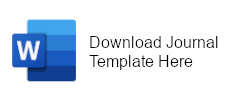Stages of Quality Control of Low Frequency Passive Seismic Data Acquisition: study case of NL area Sangasanga Field
Keywords:
Passive seismic, borehole seismometer, challenge environment, improvement on qc process.Abstract
In January 2022, passive seismic data acquisition using a three-component broadband seismometer was successfully completed at the NL area Sangasanga field. Commonly, LFPS acquisition uses surface seismometers equipment but in this study borehole seismometers were utilized to acquire the data at all stations planned. It was a challenging condition in the middle of active production of open pit mining (24 hours a day, 7 days a week). Some strategies of acquisition have been made to deal with surface noise (human activities) to ensure the quality of data prior to advanced data processing. Due to the usage of borehole seismometers thus the procedure in equipment deployment should be cleared and recorded in data acquisition particularly, azimuth or orientation of sensor, coupling sensor and level of sensor.Moreover, the quality control or daily data acquisition checking is also to be done including daily calibration, visual/ qualitative analysis of recorded data and polarization analysis. The classification of recorded data could be achieved after the three stages of quality checking were performed. The classification into three classes based on the length of good data from recorded data, result of polarization analysis, as well as the consistency of value in daily data calibration. From each analysis of data classification obtained that the repetition measurement was needed in several points and the analysis is expanded to VHSR analysis to tackle the dips results from polarization issues. Therefore, the result of this study is VHSR map and utilized to determine a new drilling proposed well VHSR value is higher than 0.3 is indicated as the hydrocarbon prospect. In addition, result of the delineation hydrocarbon prospect map from this study is quietly matched with the net sand map of the study area that was built from various data integrations.



